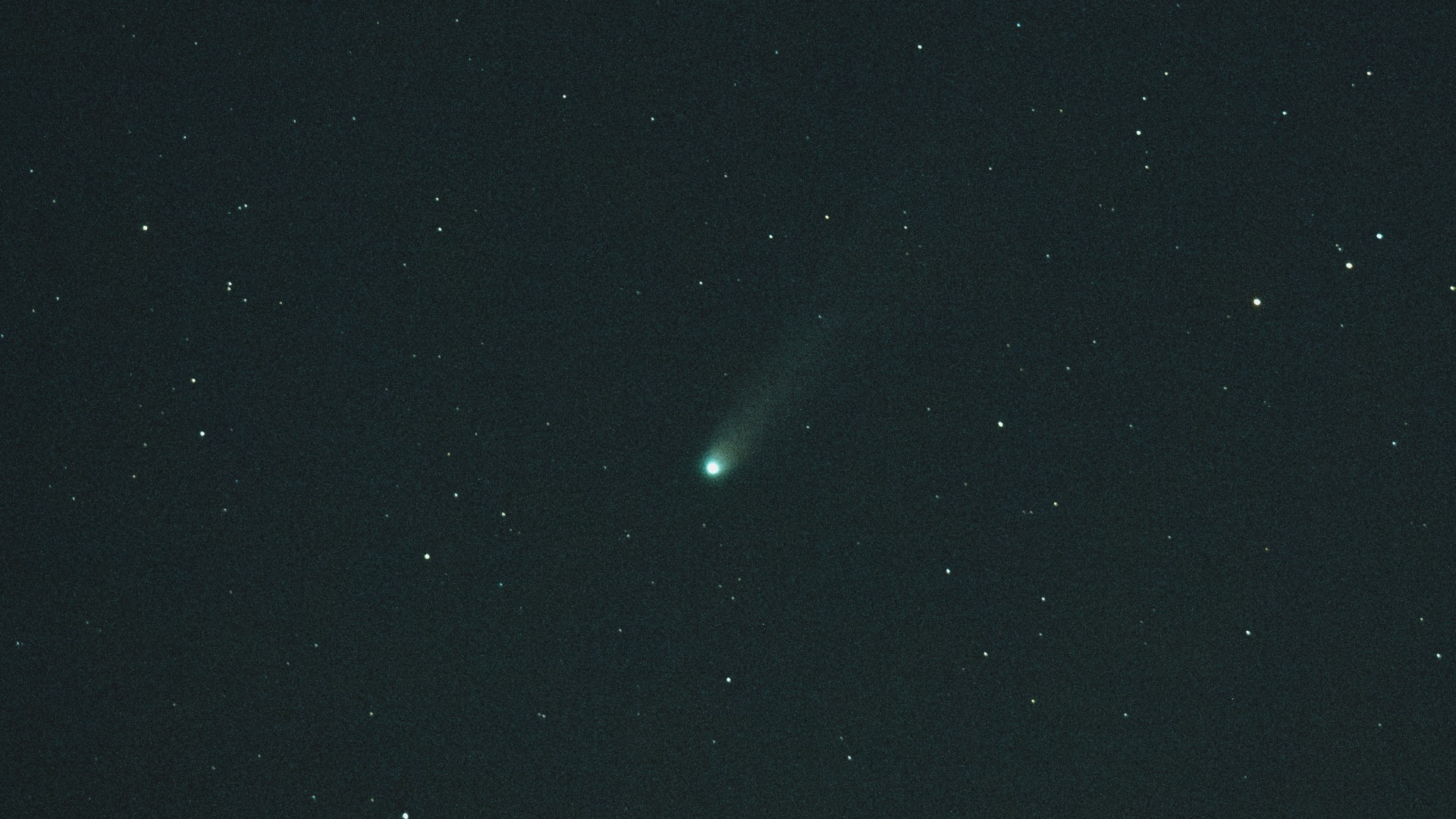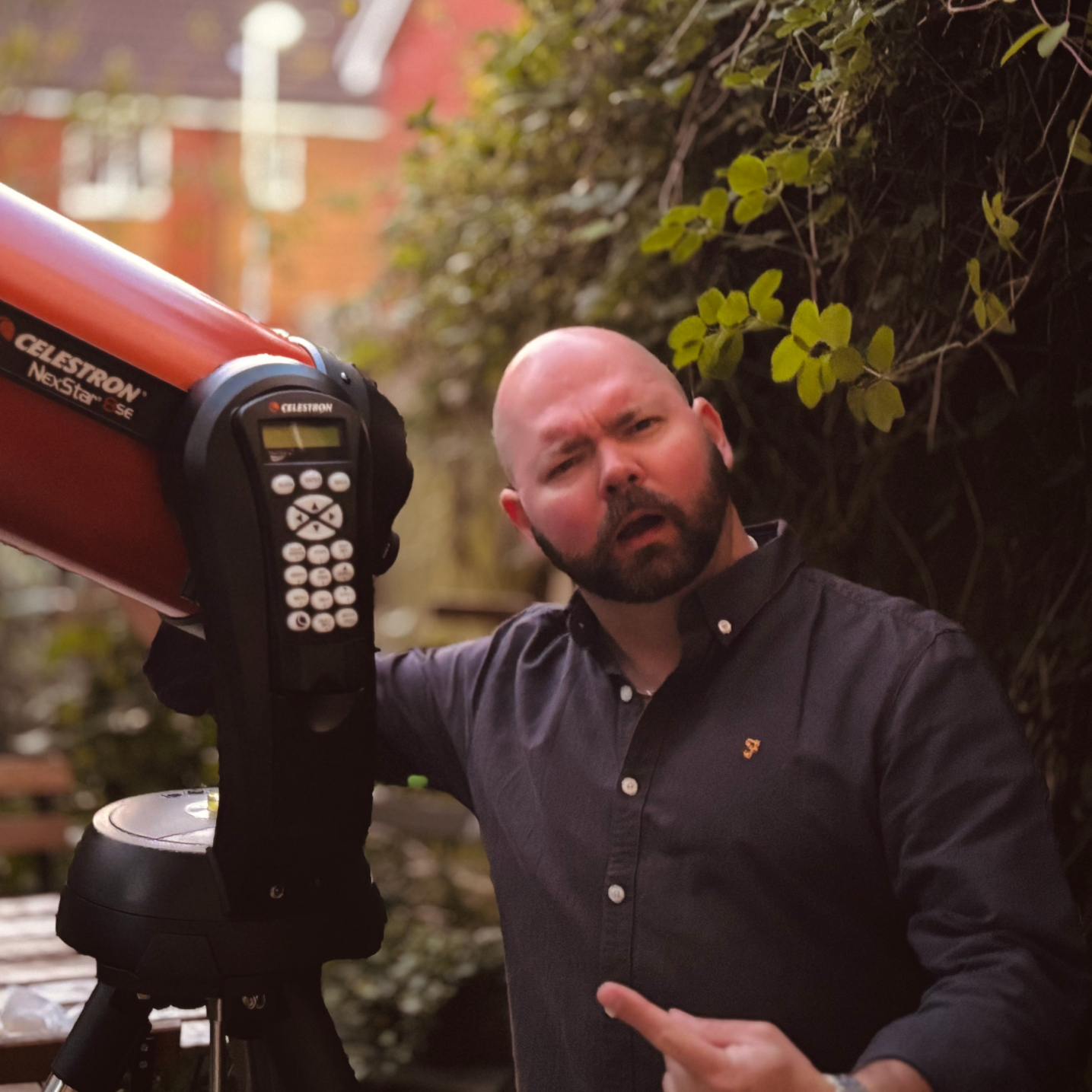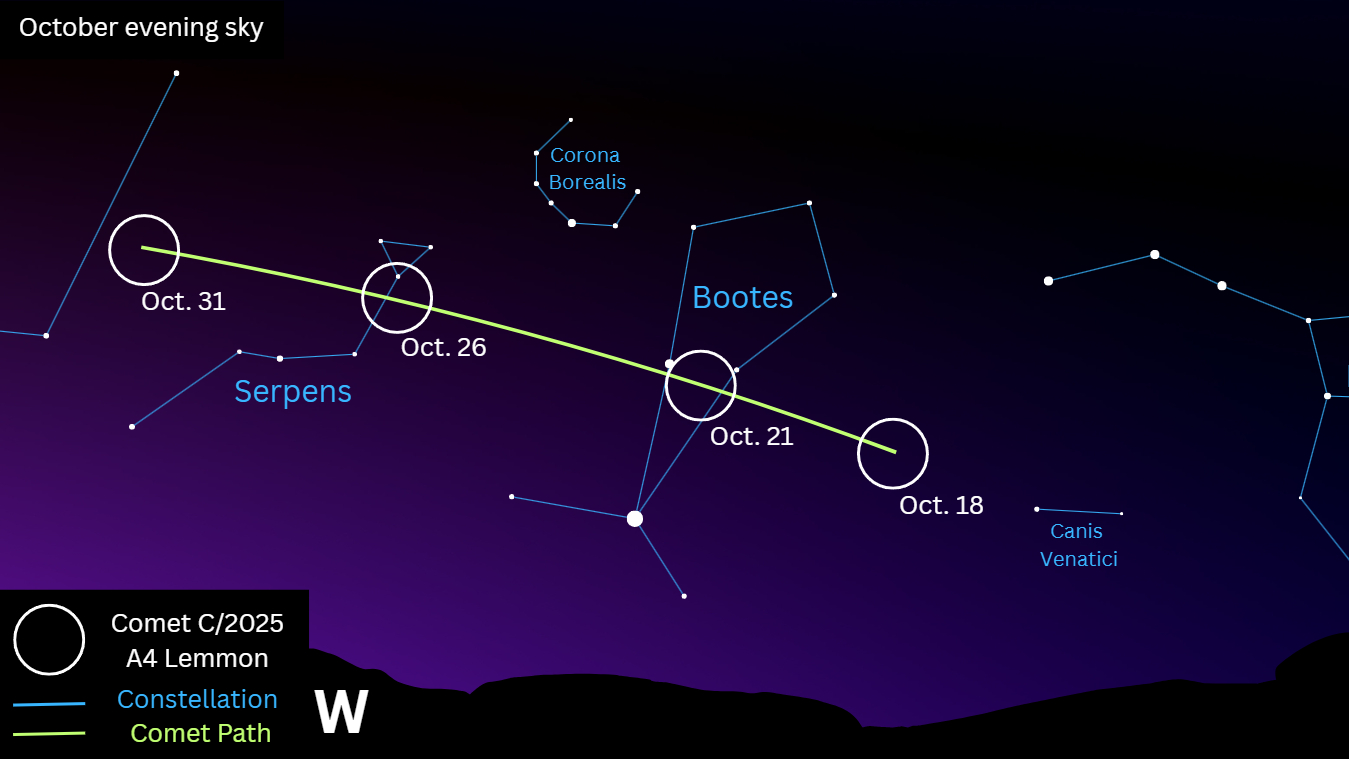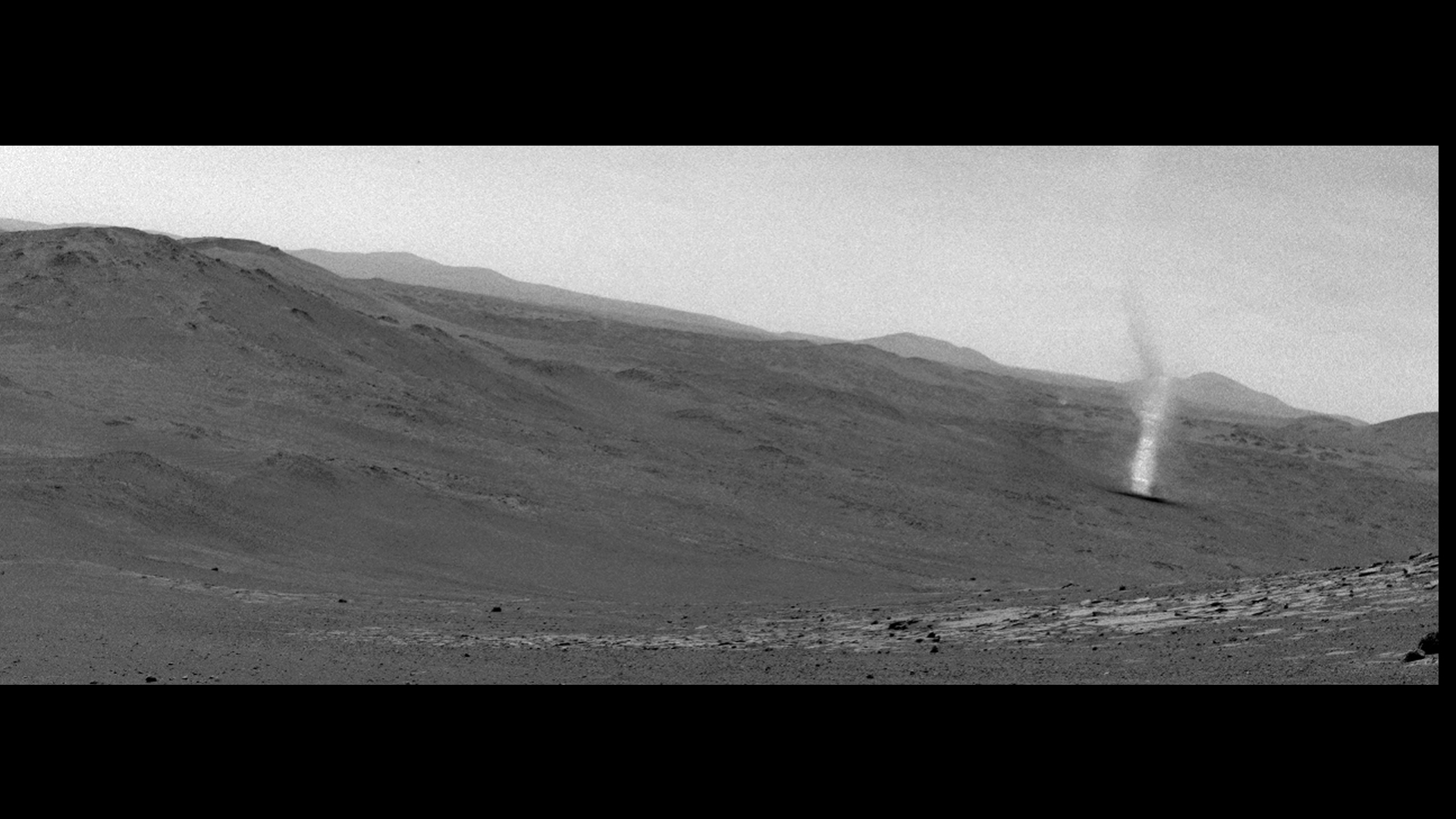See Comet Lemmon cross paths with a cosmic serpent tonight
Comet Lemmon passes through the constellation Serpens Caput on Oct. 26-27.

Comet Lemmon will cut through the neck of a cosmic serpent on the night of Oct. 26, when it passes through the stars of the constellation Serpens Caput ahead of its close approach to the sun in early November.
Magnitude is the scale used to measure the apparent brightness of objects in the night sky. The lower the number, the brighter the object! For context, the brightest stars are around Mag +1, while a full moon is -13 and the sun is -27.
The wandering comet Comet C/2025 A6 (Lemmon) was discovered on Jan. 3 earlier this year and has been brightening dramatically over the course of its subsequent headlong dive into the inner solar system. The brightening occurred as an increase in heat radiation from the sun vaporized icy materials embedded in its structure, creating a gaseous shell around its nucleus. The cometary material was then caught up in the solar wind, leading to the formation of a visually spectacular tail that shines in the reflected light of the sun.
Comet Lemmon is currently estimated to have a magnitude of around +4.3 according to the Comet Observation Database (COBS) run by the Crni Vrh Observatory in Slovenia, which should make it visible to the unaided eye from dark sky locations.
Look to the western horizon from a dark sky location at sunset on Oct. 26 to find Comet Lemmon's hazy light shine directly beneath the triangle formation of stars representing the head of the great snake in the constellation Serpens Caput. By the following night, the comet will have cut through the neck of the celestial serpent to approach the constellation Ophiuchus, the "snake bearer".
Serpens is the only constellation that appears in two halves in the night sky, with Serpens Caput appearing to the right of the constellation Ophiuchus, with Serpens Cauda — the tail — appearing to the snake bearer's left.
Whilst Comet Lemmon is technically bright enough to view with the naked eye from a dark location, a telescope or binoculars will help reveal the reflected light of the ancient visitor. Be sure to check out our guide to photographing and observing comets and to peruse our roundups of the best cameras and lenses for capturing the night sky if you're looking to update your gear!
Editor's Note: If you would like to share your commentary photos with Space.com's readers, then please send your photo(s), comments, and your name and location to spacephotos@space.com.
Breaking space news, the latest updates on rocket launches, skywatching events and more!

Anthony Wood joined Space.com in April 2025 after contributing articles to outlets including IGN, New Atlas and Gizmodo. He has a passion for the night sky, science, Hideo Kojima, and human space exploration, and can’t wait for the day when astronauts once again set foot on the moon.
You must confirm your public display name before commenting
Please logout and then login again, you will then be prompted to enter your display name.

